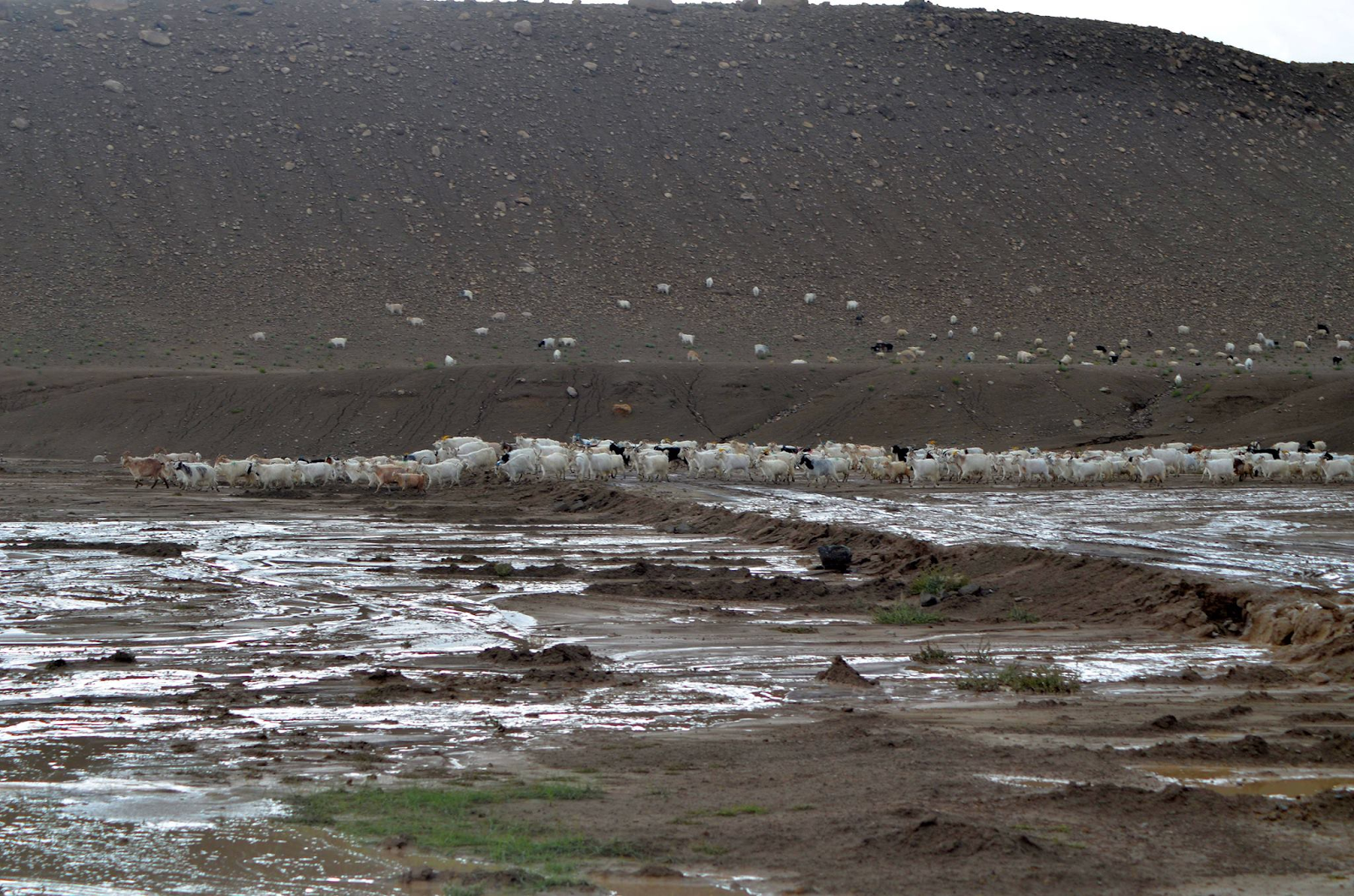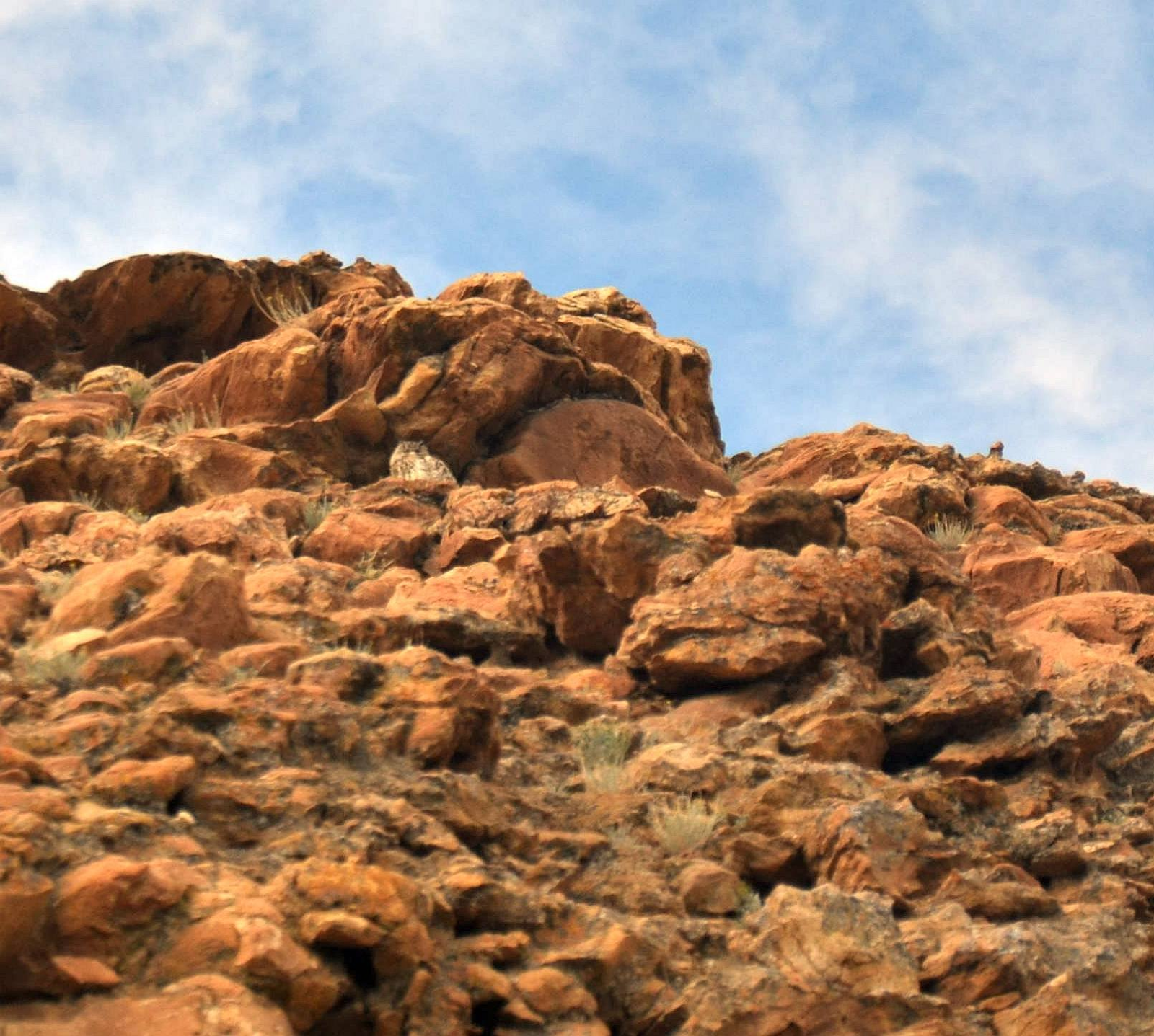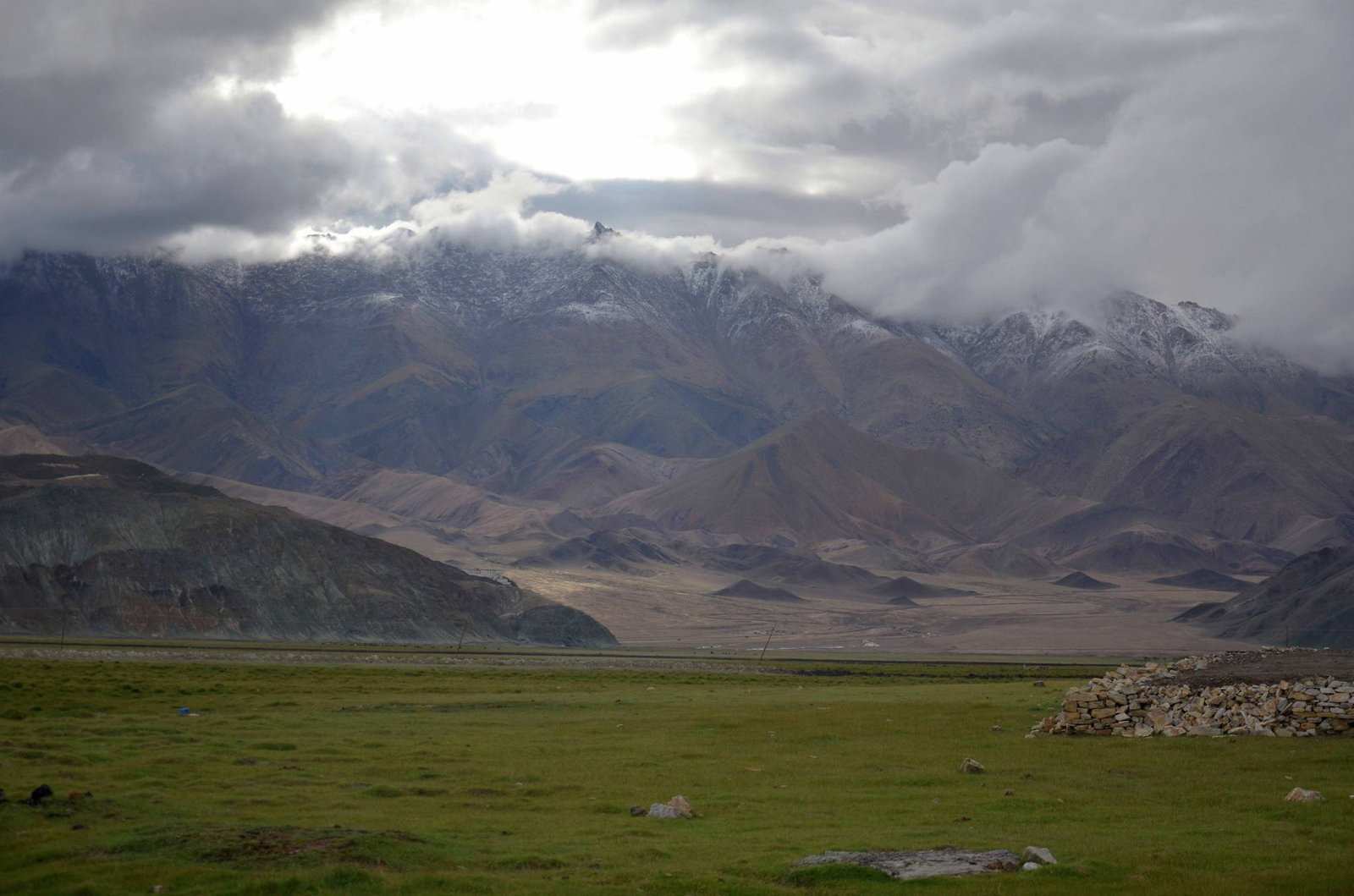The Ladakh trip was organised by Nature India in July-end of 2016. I had a narrow miss of my flight to Delhi, as it took about 5 hours for a 50 km distance from home to airport in Mumbai. How I reached the airport and boarded the flight is a different story. Now the report.
“Land of high passes” or "The Moon land" whatever you call it, Ladakh, is the most remote region of India, a barren, virtually rainless region. The annual rainfall is in the range of 100-120 mm. A cold desert due to its location in high altitude Ladakh gets water from Indus (Sindhu) River. Indus river is fed by the melting glaciers on the mountains. The mind-blowing landscapes and the rugged mountains greet you as soon as you land in Leh (3500 meters above sea level), the capital of Ladakh. The mesmerizing beauty of this place has to be felt to believe. Serenity at its best.
 |
| View from plane |
While proceeding on any type of tour in Leh Ladakh region, do not forget to carry along with you water bottles, energy drinks / bars, chocolates, dry fruits (Almond/Pistachio/Apricot). As the climate of Ladakh is extreme at both ends of the scale, also carry sun glasses, sunscreen lotion, moisturizers as well as winter wear viz. Thermal (inner) wear is a must, Jacket, Monkey cap, Gloves, woollen socks etc. and some essential medicines with you.
First and the most important thing is your physical fitness when undertaking the tour to Ladakh region. Because of the special terrain, one needs to take a rest of at least minimum 24 to 36 hours after landing in Leh-Ladakh as acclimatization procedure in the high-altitude area. As there are no forest covers or trees in Ladakh, oxygen is less. And rest is compulsory to acclimatise at this level. Also be advised not to sleep during the day, as sound night sleep is also very important.... so, bring books to read, watch movies, or chat with long lost friends / family on mobile / laptop.
Roads seem to be never ending with mountains of different colours and hue as if somebody has painted or doodled on it. Sometimes Monasteries will greet you. Famous amongst them are Hemis, Thiksey, to name a few. Border Roads Organisation, (BRO) doing an excellent job in maintaining these roads in severe and adverse conditions. Army camps are also plenty. A Big salute to the Army for the untiring effort in keeping the borders safe and to BRO for repairing the roads instantly after a landslide or boulder falling instance is reported.
Once can see many "La" and "Tso" in Ladakh. La means Pass and Tso means Lake. Once you leave Leh for Nubra Valley via Khardung La pass (one of the highest motorable road in the world - 17582 ft above sea level), Pangong Tso via Chang La pass (another highest motorable road in the world – 17585 ft above sea level), Tso kar, Tso moriri via Taglang La pass (another highest motorable road in the world – 17480 ft above sea level) or Hanle (250 km road alongside the river Indus – Upshi, Kiari, Nyoma are the towns you cross on the way), the panoramic views you experience during your ride are out of the world. Do plan your departure with sufficient time gap after your tour as natural calamities like land slide, etc. can stuck up your return plan to base camp at Leh. So, plan accordingly and enjoy one of the most panoramic tours you can think of.
 |
War Memorial at Hall of Fame Museum at Leh, Ladakh
|
 |
Indus river, Leh, Ladakh
|
 |
| On way to Magnetic Hill, Leh |
 |
| Leh City Post Office |
 |
| Night View of Leh Main Bazaar |
 |
| Hemis Monastery, Ladakh |
Hemis Monastery founded in 17th Century. Annual Hemis festival takes place on the 10th and 11th day of the 5th Lunar Calendar. Hemis has more than 200 branch monasteries in the Himalayas and is an important living monument and heritage of Himalayas and its people. One of the best Honey, Lemon, Ginger Tea I had in a long time. There are variety of tea you can have at Hemis Restaurant, Hemis Monastery, Ladakh.
 |
| Maitreya Statue – Statue of the Future Buddha, Thiksey, Ladakh |
The 12 meter (40 ft) high statue took 3 years to build, with 30 people working continuously. It is made of clay and terracotta brick painted with gold. The murals behind the statue tell the story of the Future Buddha. On the right side opposite the door are paintings of Thiksey Rinpoche’s lineage. On 26.7.1980, His Holiness the Dalai Lama consecrated the statue. The image you see is the portion as seen from upper floor.
 |
| Magnetic Hill (Gravity Hill), #Ladakh |
The layout of the area and surrounding slopes creates an optical illusion that the downhill road is actually an uphill road. Objects and cars on the hill may appear to roll "uphill" in defiance of gravity when they are, in fact, rolling downhill.
 |
| Himalayan Marmot |
Himalayan Marmot, from mammal class is found in the upper reaches of the Himalayas. Mostly visible in the mountainous regions of #Ladakh and Bhutan.
 |
| Yak |
Yak is a long-haired animal found throughout the Himalayas, the Tibetan Plateau and as far north as Mongolia and Russia. Most yaks are domesticated. Wild yaks are generally dark, blackish to brown, in colour. However, domestic yaks can be quite variable in colour, often having patches of rusty brown and cream. They have small ears and a wide forehead, with smooth horns that are generally dark in colour.
 |
| Thiksey Monastery, Leh |
 |
| Sunset at Pangong Tso |
 |
| Pangong Tso |
 |
| View of Pangong Tso |
 |
| Common Merganser at Pangong Tso |
Pangong Tso (Lake) - Known for sheer natural beauty, Pangong can easily be termed as one of the most picturesque places in the World! ......Best seen in evening, this place is a paradise for landscape photography. Birds seen here are; Brown-headed Gulls, White-winged Tern, Common Merganser, Bar-headed Geese, Lesser Sandplover, etc. The ones you see in the photo are Common Merganser
 |
| World's third highest motorable road, Changla Pass |
 |
| Another World's highest motorable road - Taglangla Pass (Tanglangla Pass) |
 |
| Tsokar Lake |
Tsokar" means salty lake in local language. Here the waters are alkaline. This is probably the best birding place in Ladakh... Famous for Tibetan Wild Ass & endangered Black-necked Cranes, this place is also known for breeding of Bar-headed Geese & Ruddy Shelducks. Other birds here include Great-horned Lark, Snowfinch, Twite, Great Rosefinch, Raven, Little Owl, Tibetan Sandgrouse, Hill Pigeon, Common Kestrel, Bar-headed Geese, Brown-headed Gulls, Red-crested Pochard etc..
 |
| Wolf Trap, Tsokar |
This is wolf trap, Tsokar. Locals build it in such a way that it looks like a pot. Upper portion converges so that when a wolf which is preying on their livestock, lured with a dead animal, it can't get out due to its design. The wolf is stoned to death later.
 |
Tso Moriri Lake
|
Tso Moriri is the largest High altitude lake in Himalayas, situated at 4,595 m (15,075 ft.). Also called as Tso Moriri Wetland Conservation Reserve. Among birds, Bar-headed Geese, Brown-headed Gulls, etc. breed here in large number. On your left is China border at 60 km. Exactly at this spot on the right, we saw Streaked Rosefinch
 |
| Horned Lark |
Horned Lark with breakfast. Black and white head pattern with black mask, "horns" and band across crown. Black breast-band and sandy upperparts are its identification. It is a resident of High Himalayas.
 |
| Indus River |
Indus river after a spate of 10 minutes rain, on way to Hanle, Ladakh. We came to know at Hanle that it was heavy rains. Annual rainfall in Ladakh is in the range of 100 mm to 150 mm. We on this part of India should be grateful to Rain God.
 |
| Pashmina goats |
Pashmina (Changthangi) goats returning back near Hanle. This is where two of the three vehicles stuck due to the 10 minutes rain fall which dumped so much of slush on the road. The driver of the first vehicle in which we were, went back on foot and had a pep talk with other two drivers who eventually joined us after a while.
 |
| Eurasian eagle owl, Hanle |
Photographer's nightmare. Earlier night I tried my luck with 18-105 mm lens and some manual settings to take night view of stars as tutored by Sumukh Deodhar. He also warned to reset all the settings immediately so that next morning venture will be hassle free. All done. But in the morning forgot to change the lens to 70-300 mm. Left with same lens. That's why could not capture this beauty more closely. Eurasian Eagle Owl, resident of Baluchistan hills, Himalayas and Arunachal above 1800 meters. Very large with upright ear-tufts. breast heavily streaked. Cliffs and open rocky areas are its habitat.
 |
| Sun set at Hanle |
 |
| Monastery at Nyoma |
 |
| Upland Buzzard |
Upland Buzzard breeds in Ladakh. Longer winged and longer tailed than Himalayan Buzzard. Soars with wings in deeper V. Has a combination of large white primary patch on upperwing, greyish white tail. underparts with dark brown streaking, brown thighs. Open country in hills and mountains are its habitat.
 |
Western Kiangs crossing the Indus river near Hanle
|
 |
| Blue sheep crossing a stream, Ladakh |
Much water has flown over and now Ladakh has become a union territory. Umling La has taken over the mantle of the highest motorable road at an height of over 19000 ft.






























No comments:
Post a Comment